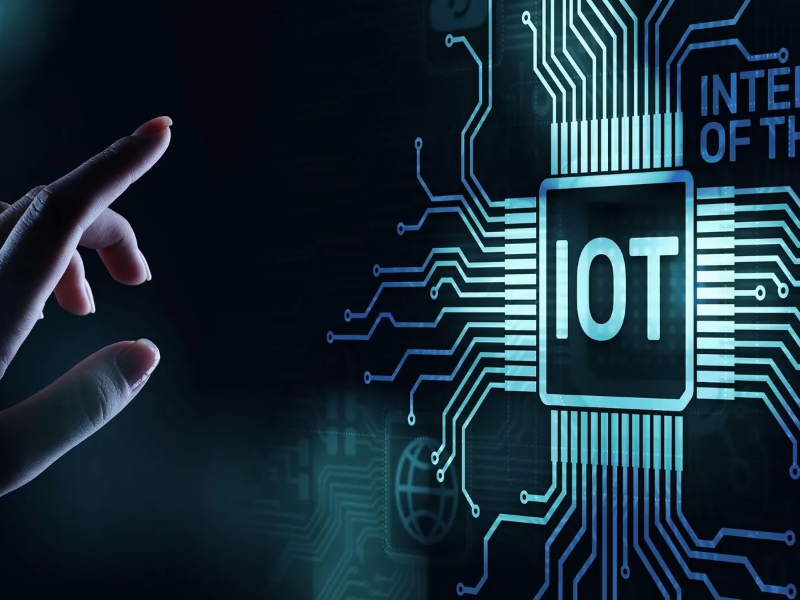- The concept of the Internet of Things first appeared in Bill Gates in 1995, “The Road Ahead” book. IoT is a network of physical objects that are embedded with sensors, software, and other technologies to transform physical objects that surround us into an ecosystem of information
- Three basic architecture of IoT are the perception layer, the network transmission layer and the application layer. Therefore, all complete IoT systems are the same in that they represent the integration of four distinct components: sensors/devices, connectivity, data processing, and a user interface
- IoT is now portable, wearable, and implantable, creating a ubiquitous and connected universe and the importance of the IoT can be seen in the automation of tasks, increased environmental safety in emergencies, optimised energy use, reduced carbon emissions, and the promotion of cross-industry innovation.
The Internet of Things (IoT) is everywhere. If you’ve ever owned a thermostat with automated temperature control or a wearable device that can monitor heart rates, or if you’ve ever come across a voice-activated street light, congratulations, you’ve already met with IoT!
From ‘things‘ to ‘data‘
The concept of the Internet of Things first appeared in Bill Gates’s 1995, “The Road Ahead” book. Bill Gates mentioned the concept of the Internet of Things, but only at that time, limited by the development of wireless networks, hardware, and sensing equipment, did not cause the world to pay attention.
The simplest explanation of IoT is a network of physical objects that are embedded with sensors, software, and other technologies to transform physical objects that surround us into an ecosystem of information that is rapidly changing the way we live.
IoT networks can be categorised into four main types: LAN/PAN, LPWAN, and Mesh protocols. The classification is based on factors like network coverage and available bandwidth. These may sound too “techy”, but it’s worth noting that the majority of IoT networks operate wirelessly.
Also read: Qualcomm unveils AI-Ready IoT platform at Embedded World 2024
The core and foundation of IoT is the Internet, which is an extension and expansion of the Internet to include not only connections between people, but also connections between people and things, and between things.
Therefore, all complete IoT systems are the same in that they represent the integration of four distinct components: sensors/devices, connectivity, data processing, and a user interface, which corresponds to the basic architecture of IoT: the perception layer, the network transmission layer and the application layer.
The sensing layer is responsible for obtaining information about the items, the network transmission layer is responsible for transferring this information to the application layer for processing, and the application layer provides appropriate services or decision support based on this information.
IoT is changing our lives
IoT is now portable, wearable, and implantable, creating a ubiquitous and connected universe and the importance of the IoT can be seen in the automation of tasks, increased environmental safety in emergencies, optimised energy use, reduced carbon emissions, and the promotion of cross-industry innovation.
Every day of our lives we can see the Internet of Things functioning. When you wake up in the morning, your watch monitors your sleep quality and real-time heart rate. Connected cars take information from surroundings to provide drivers with diagnostic information that can be acted upon quickly, and are equipped with built-in sensors that help with efficient parking.
Also read: IIJ’s SoftSIM integrates with Nordic to simplify IoT deployment
A cup of coffee before work could come from Tanzania from beans grown with the help of IoT devices. Your office building could be equipped with a smart building energy management system that collects real-time data about the city’s environment, infrastructure and activities through IoT devices and connects the different non-standard heating, cooling, lighting and fire safety systems to a central management application.
In the future we could also see smart meters that improve leak detection and data integrity, putting energy efficiency and sustainable practices within reach. Intelligent transportation systems provide integrated transportation hubs that are seamlessly connected through multiple modes of transportation such as bus systems and subway systems, reducing the risk of traffic jams and accidents, and more. The Internet of Things holds great promise.
IoT has already changed when and where work is done, in almost every industry. Businesses are transitioning to the Internet of Everything (IoE), an unprecedented network connection that encompasses machines, individuals, processes and data that can have a huge impact on our daily lives.

